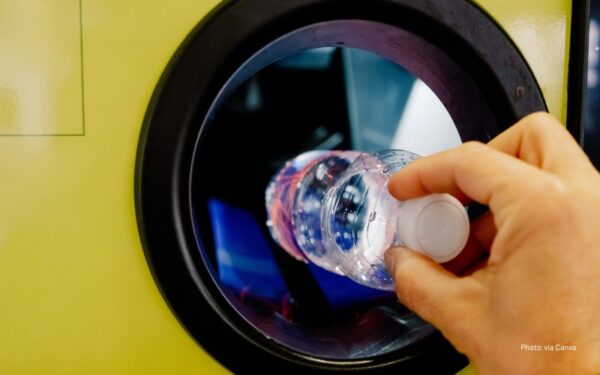
Harnessing more renewable energy, like wind power, isn't just about the numbers of our climate law. It's about protecting the health and safety of the people we love in the face of climate change. Photo Source: United States Fish and Wildlife Service, Joshua Winchell – Flickr.
Despite this winter’s relatively mild temperatures (aside from a few cold snaps) – we still felt the pressure of high electricity prices in Maine. In fact, bills nearly doubled – a pattern that we’ll continue to experience as long as we stay dependent on price-volatile fossil fuels like natural gas as the source of our electricity.
We know we need to use more clean energy, like solar and wind power, to lower our electricity prices. Not to mention, clean energy resources don’t spew pollution into the air, damaging our climate, our health, and our environment. That’s why Maine’s decision to move forward on two large renewable energy projects has potential. Let’s dive into what these projects are and their impact on Maine.
Developing More Wind Power in Maine
The first project would build up to 179 wind turbines, enough wind power to generate 1,000 mega-watts of electricity and power several thousand homes. The second would create a transmission line to bring that renewable energy from northern to southern Maine and the rest of New England’s electric grid by 2028. The wind project will be constructed in Aroostook and Penobscot Counties, and the transmission line will run from Aroostook County south to Somerset County.
This new renewable energy and the ability to deliver it is critical. Not only does it move us closer to meeting the state’s mandatory climate law (which demands slashing polluting emissions 80% by 2050), but more renewable energy also means fewer unpredictable electricity bills and a healthier climate.
Additionally, northern Maine’s transmission system doesn’t currently connect to the rest of the New England grid. So, transporting energy that is generated in northern Maine results in a costly detour all the way into Canada and then back south – a cost reflected in higher electricity bills. This proposed transmission line will slash the distance (and cost) required to get energy generated up north into the rest of the state and the region.
Electricity customers will pay some upfront costs for these projects, but the Maine Public Utilities Commission estimates this will be only $1 per month for the average residential household. Importantly, Massachusetts has agreed to pay for 40% of the projects, which helps buffer the initial costs of development. And these costs will be negligible in comparison to the overall savings that will come from renewable energy.
What to Look For
Clearly, any new energy project is going to affect everything and anyone nearby. That includes people living in both rural and urban areas, as well as those living in Tribal communities, along with Maine’s wildlife habitat.
That’s why CLF wants to see these two projects developed with the utmost care and community engagement. Well before beginning construction, project developers should consistently and continually engage and share information with the public on their progress. They should also specifically account for any effects on Indigenous and Tribal communities who often already bear the polluting effects of energy infrastructure that whiter and wealthier communities benefit from.
Additionally, when developers choose the exact locations for these two projects, they will have a responsibility to lessen impacts on adjacent and neighboring communities that will experience disruptions or public health consequences during and after construction. Neighboring communities could receive monetary benefits like payments for social, economic, and cultural programs and facilities, and non-monetary benefits like improved broadband access.
Project developers must also pay attention to their effect on the environment. To the extent the new energy infrastructure impacts critical wildlife habitats, development should include strategies like wildlife corridors under the new transmission line that create intact expanses of natural areas where animals can roam freely. Developers can also permanently conserve other portions of land to make up for unavoidable environmental impacts and create plans to remove projects when they’ve reached the end of their useful life.
What Comes Next for Maine’s New Renewable Energy Projects
Because the new transmission line will deliver wind energy throughout Maine and throughout New England via the region’s electric grid, it furthers our collective climate action. This is especially critical given that ISO New England, the entity managing our electricity grid, is falling woefully short on facilitating our states’ fight against climate change. The grid operator has favored and prioritized outdated and climate-damaging fossil fuels when they should be supporting the development of clean power. These two projects are an excellent example of states working together for the sake of their residents’ health and wallets – despite roadblocks from ISO.
Later this year, the developers of these projects will begin applying for permits from various state and federal agencies that will have to give their approval. Throughout the permitting processes, Mainers will have the opportunity to participate and comment with their support and opinions. We will keep you up to date with any opportunities to use your voice and ensure these projects are developed responsibly and in the best interest of our families and businesses.
Maine needs and deserves clean, affordable electricity, and these renewable energy projects have the potential to get us there.



